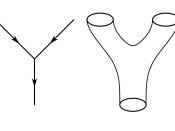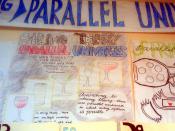String Theory provides a framework to explain absolutely all workings of the universe. It has been successful in bridging general relativity and quantum mechanics, which alone contradict each other. There were and still are, however, obstacles to overcome. Over the last three decades countless modifications and revamping have been performed on String Theory. String Theory with its ability to explain the workings of the universe has not always been convincing, but with much persistence it has been made once again to look promising.
Throughout the history of physics, countless theories have been contrived. Many of these only work in certain situations, or contradict other theories. When this happens that theory is usually used where it successfully can be, and dismissed where it has been known to fail. String Theory looks to solve this problem. It hints at being able to explain far more (maybe everything) about the universe than any previous theory.
If the String Theory is correct, an unimaginable amount of knowledge pertaining to the universe could be obtained. John Gribbin commented that "Since Einstein's time this "ÃÂTheory of Everything' has become the Holy Grail of physics..." (Gribbin, NP).
One reason this theory advances where others fail is the strings' intrinsic properties. "According to String Theory, if we examine these particles with a precision many orders of magnitude beyond our present technological capacity, we would find that each is not pointlike, but instead consists of a tiny one-dimensional loop" (Greene 14). These "tiny" strings are in fact infinitesimally small. A typical string is about the Planck length, 10-33cm, or a millionth of a billionth of a billionth of a billionth of a centimeter long. "These strings are confined to their tiny scale by their own enormous tension. This tension varies from string to string, but the Plank tension...



Jhon Marconi
Informations are detailed
0 out of 0 people found this comment useful.